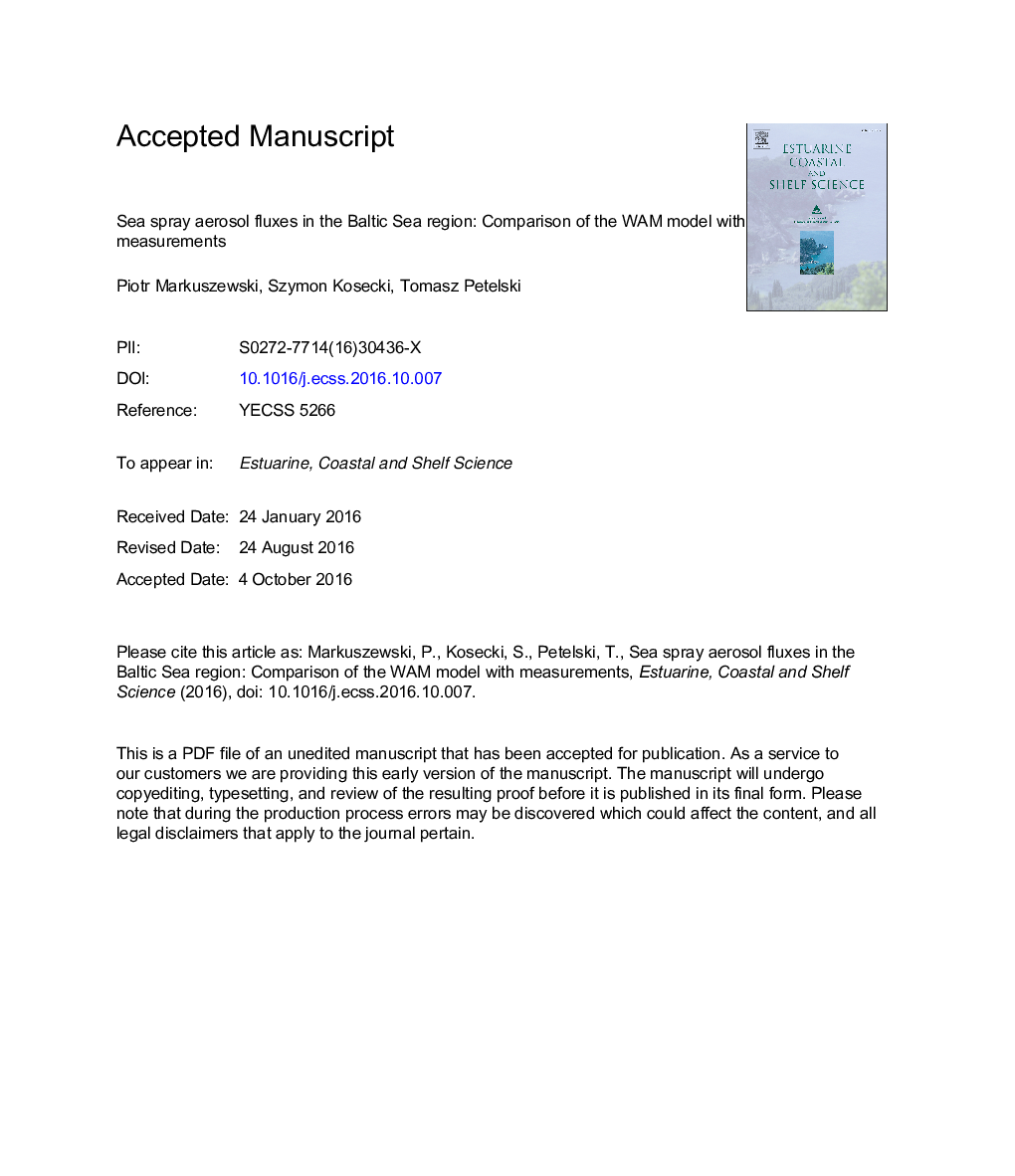| Article ID | Journal | Published Year | Pages | File Type |
|---|---|---|---|---|
| 5765027 | Estuarine, Coastal and Shelf Science | 2017 | 13 Pages |
Abstract
Sea spray aerosol flux is an important element of sub-regional climate modeling. The majority of works related to this topic concentrate on open ocean research rather than on smaller, inland seas, e.g., the Baltic Sea. The Baltic Sea is one of the largest brackish inland seas by area, where major inflows of oceanic waters are rare. Furthermore, surface waves in the Baltic Sea have a relatively shorter lifespan in comparison with oceanic waves. Therefore, emission of sea spray aerosol may differ greatly from what is known from oceanic research and should be investigated. This article presents a comparison of sea spray aerosol measurements carried out on-board the s/y Oceania research ship with data calculated in accordance to the WAM model. The measurements were conducted in the southern region of the Baltic Sea during four scientific cruises. The gradient method was used to determinate aerosol fluxes. The fluxes were calculated for particles of diameter in range of 0.5-47 μm. The correlation between wind speed measured and simulated has a good agreement (correlation in range of 0.8). The comparison encompasses three different sea spray generation models. First, function proposed by Massel (2006) which is based only on wave parameters, such as significant wave height and peak frequency. Second, Callaghan (2013) which is based on Gong (2003) model (wind speed relation), and a thorough experimental analysis of whitecaps. Third, Petelski et al. (2014) which is based on in-situ gradient measurements with the function dependent on wind speed. The two first models which based on whitecaps analysis are insufficient. Moreover, the research shows strong relation between aerosol emission and wind speed history.
Related Topics
Physical Sciences and Engineering
Earth and Planetary Sciences
Geology
Authors
Piotr Markuszewski, Szymon Kosecki, Tomasz Petelski,
